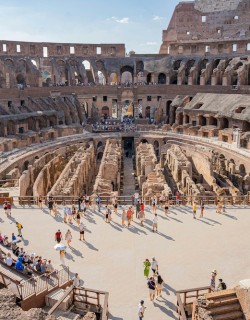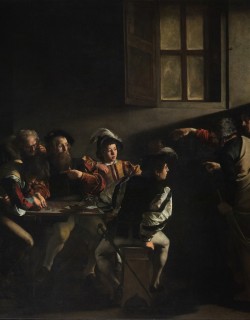Trastevere’s dense web of cobbled alleys and flower-strewn piazzas offers up an indelible portrait of the Eternal City at its most characteristic, and it’s little wonder that this is many people’s favourite neighbourhood in Rome. Days spent ambling around here are never wasted, and from artisans' workshops to local restaurants, Baroque palaces and even the traces of a millennium-old synagogue, you never know what lies in store. Trastevere is also home to some of Rome’s most fascinating churches, treasure-troves of art and history that runs the gamut from ancient crypts to medieval mosaics, precious holy relics to jaw-dropping paintings and sculptures by some of the greatest artists to have ever lived. Discover the most beautiful churches in Trastevere with our guide, and find out why you need to visit this charming neighbourhood across the Tiber when in Rome!
Santa Cecilia in Trastevere
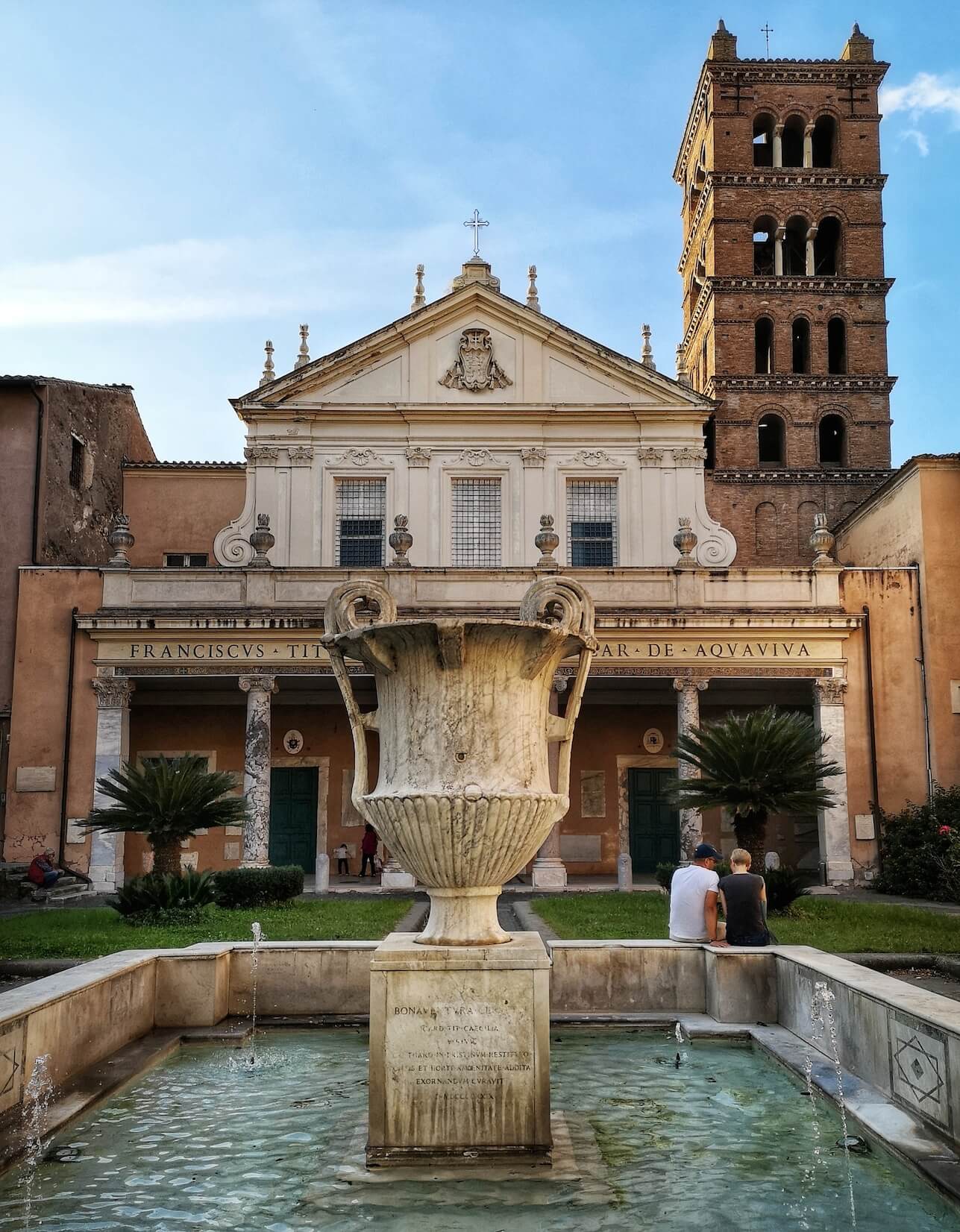
Rome is one massive palimpsest, its buildings intricate layers of history piling up on each other over the centuries. Nowhere is this more apparent than in the magnificent church of Santa Cecilia in Trastevere, built, according to tradition, on the site where the pious saint was martyred for her faith; enter via a charming leafy atrium, where a massive ancient cantharus (drinking vessel) stands at the centre of a gurgling fountain. Inside, a much-restored Rococo interior leads to a Gothic baldachin canopy that soars towards the ceiling, a masterpiece of medieval art by the renowned sculptor Arnolfo di Cambio. In the apse behind, a 1,200 year-old Byzantine mosaic glitters with images of Christ and various saints, date palm trees, phoenixes and lambs, testament to an even older tradition of art in the church.
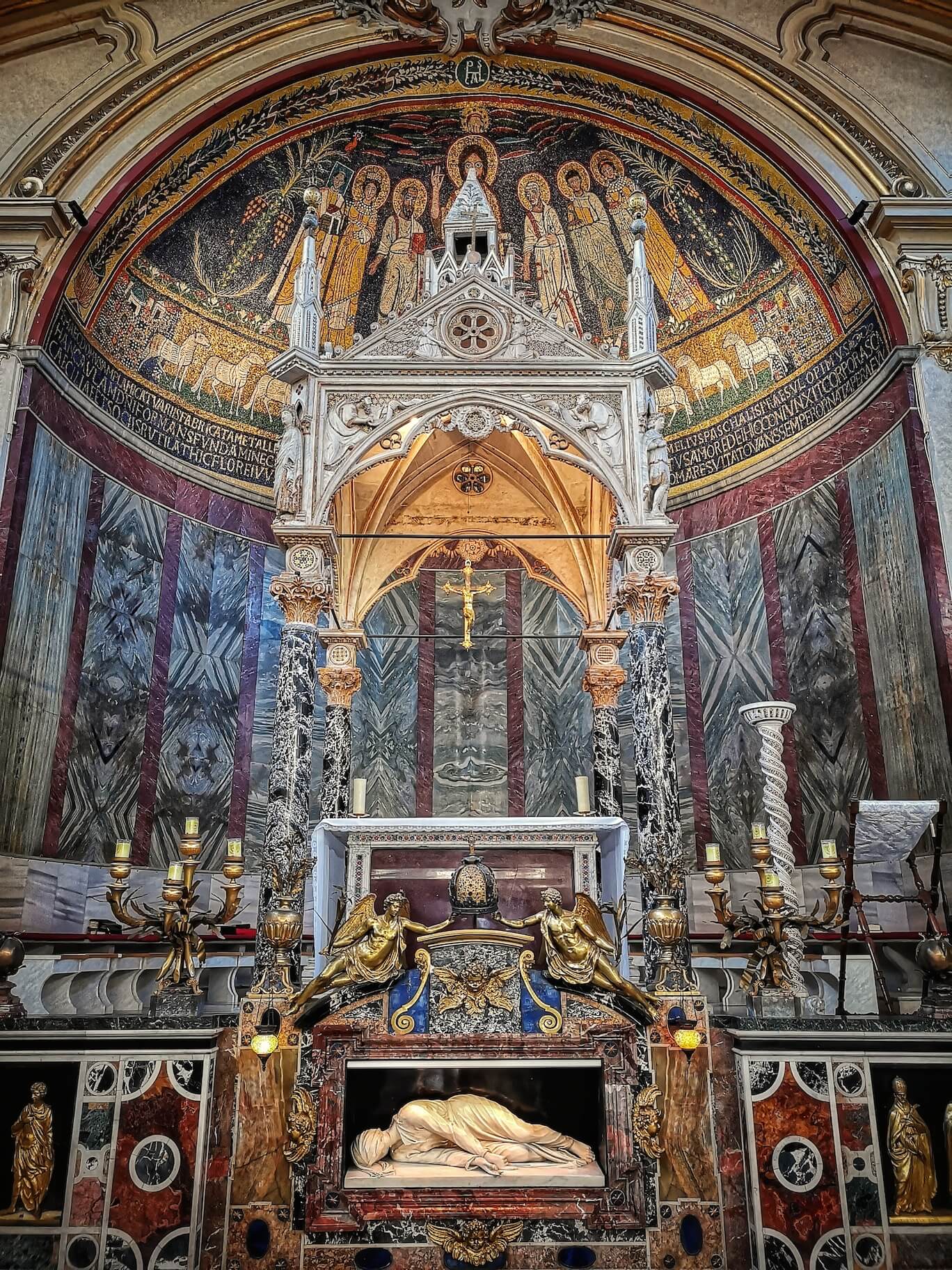
Beneath all this is a beautiful statue of saint Cecilia herself lying in peaceful eternal rest- according to legend, when her body was discovered in 1599 beneath the church it was immaculately preserved in the exact same pose as when the martyred saint died over a millennium earlier. Before her exposed body crumbled to dust the sculptor Stefano Maderno immortalised her exactly as she was in stone, and she still occupies pride of place in the church today over 400 years later surrounded by precious multicoloured marbles.
And that’s not all; you can see proto-Renaissance master Pietro Cavallini’s stunning Last Judgement fresco here, arguably the greatest hidden gem of Roman art. Painted in around 1293 at the behest of the French Cardinal Jean Cholet, Cavallini’s fresco was sadly partly destroyed during an ill-advised 16th-century remodelling of the church. But fortunately the most important part of the work survived - the figure of Christ himself in a mandala carried aloft by a troupe of angels with fabulously colourful wings, flanked by the 12 apostles.
Santa Maria in Trastevere
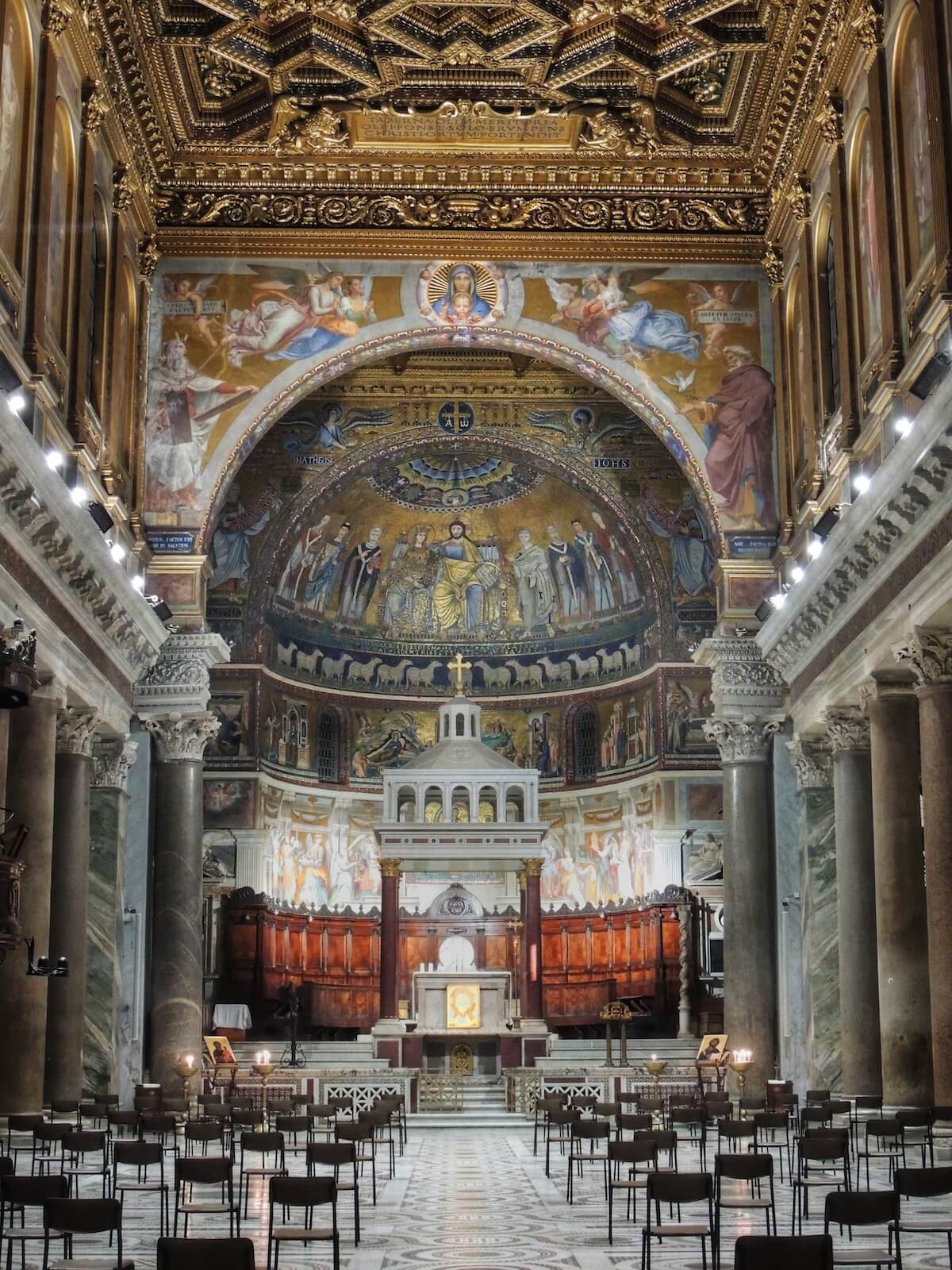
Right at the heart of the dense network of cobbled streets that makes up the beautiful and vibrant Trastevere quarter, Piazza di Santa Maria in Trastevere is arguably Rome’s loveliest square. The steps of Carlo Fontana's majestic fountain in the centre of the piazza make for one of the city’s most enduring meeting-points, whilst the impressive bulk of the church that gives the square its name dominates the surroundings.
Although the exact origins of Santa Maria in Trastevere are lost to time, one tradition claims that a place of Christian worship on the site was the first to openly host masses in Rome way back in the third century. According to another, a miraculous spring of olive oil gushed forth on the site at the moment of Christ’s birth. The magnificent basilica we see today dates from the 1100s, and owes its current form to the bitter conclusion of one of the great crises of the medieval church when Gregorio Papareschi defeated his rival for the papacy Pietro Pierleoni, and set about rebuilding the latter’s titular church in his own image.
The spacious interior is heart-stoppingly beautiful; soaring columns plundered from the Baths of Caracalla dominate the nave, whilst a wonderful mosaic depicting Christ and the Virgin Mary enthroned commissioned by Papareschi (now Pope Innocent III) lights up the apse. A dazzling further series of mosaics, meanwhile, created by pioneering artist Pietro Cavallini in the closing years of the 13th century at the behest of local bigwig Bertoldo Stefaneschi, are rendered in a dazzlingly naturalistic key that sowed the seeds of an artistic revolution. This is medieval Rome at its finest.
San Francesco a Ripa
San Francesco a Ripa owes its name to a supposed visit that St. Francis himself made here in the year 1219. His austere cell still preserves the rock he used in lieu of a pillow and the crucifix he prayed to. The interior is largely 17th-century Baroque, and the highlight is without doubt the final masterpiece of Gianlorenzo Bernini, located in the last chapel on the left hand side of the aisle. The aged master was well into his 70s when he carved this extraordinary tribute to the pious local woman Ludovica Albertoni, who dedicated her life to aiding the neighbourhoods poor. Bernini’s sensuous rendering recalls his earlier depiction of The Ecstasy of Saint Teresa across town; here the blessed Ludovica is captured in her apparently rapturous death throes, an enigmatic sigh escaping from her lips as she clutches her bosom, eyes rolling upwards, garments a swirling and tumultuous rush of fabric and folds moved by the mysterious power of an unseen force. The virtuosity of the carving, the sureness of composition, line and form make clear that this is no final, wavering full stop at the twilight of a glittering career. Read more about Bernini’s masterpiece here.
Santa Maria dell’Orto

Tucked away in the charming back streets of Trastevere, the extraordinarily opulent spectacular Baroque church of Santa Maria dell’Orto in Trastevere owes its beautiful name - Saint Mary of the Vegetable Garden - to the fact that its location was originally immersed in a vast swathe of cultivated greenery in this sparsely populated area west of the river Tiber.
An image of the Virgin Mary was painted on the wall of one of the gardens, and in the 15th century a series of miracles were attributed to the icon’s divine intervention. A chapel was built on the site by locals devoted to the image, and in 1495 work began on a full-scale church funded by the Università delle Arti e dei Mestieri, a professional corporation composed of the unionised members of fully 12 separate trades, from chicken sellers to sausage makers, pasta producers to cobblers, winemakers, greengrocers, millers and more.
Each of the different trades were responsible for patronising a different part of the church's decoration, and it goes without saying that each tried to upstage the others. The result is one of Baroque Rome's most precious artistic treasures, all the more extraordinary because no noble or aristocratic patron was responsible for the decorations. Instead, this is Rome's great church of the working people.
Santa Maria della Scala
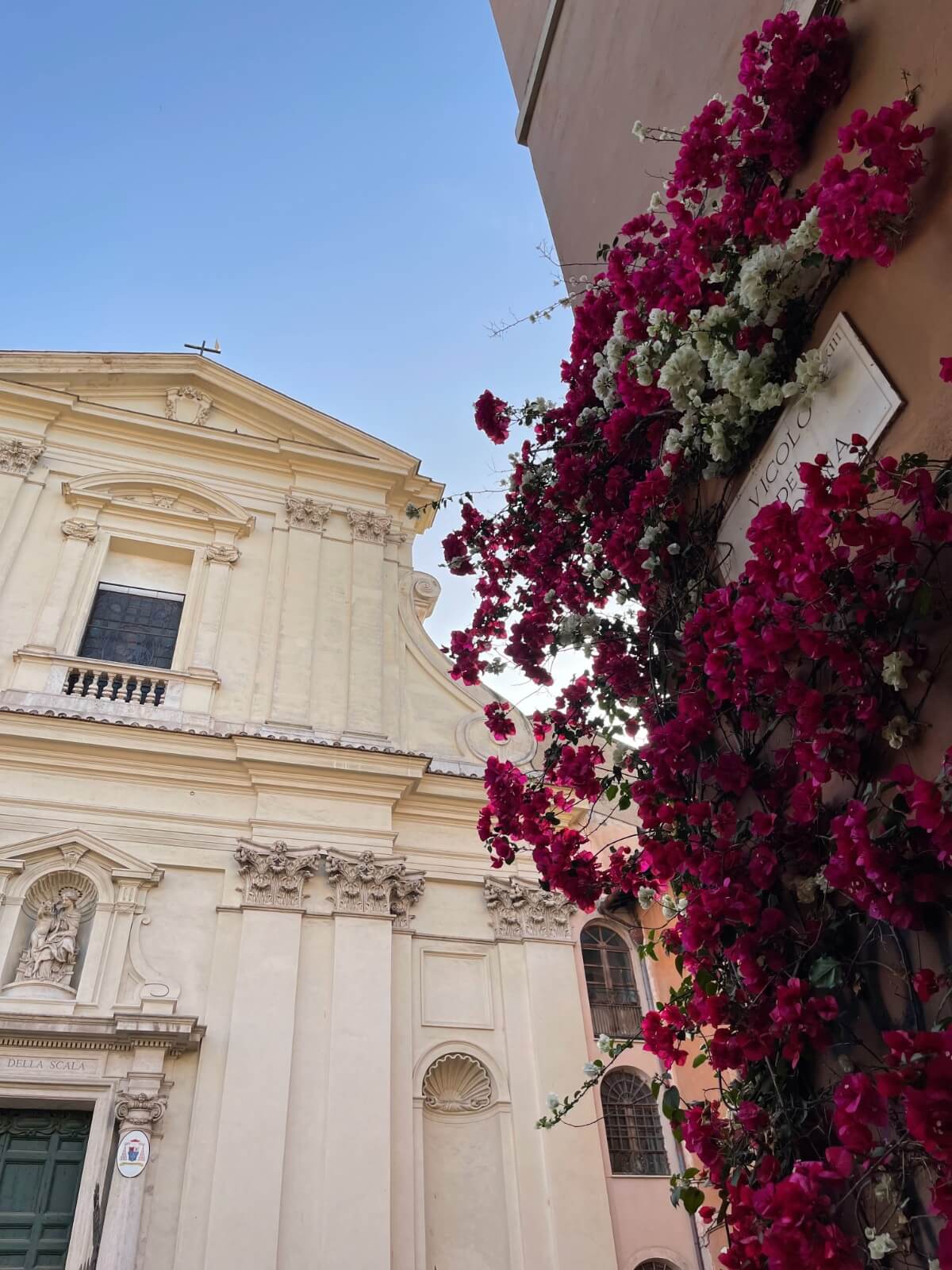
Pretty Baroque Santa Maria della Scala might be more famous for what isn’t there than what is: Caravaggio’s magisterial Death of the Virgin, now in the Louvre Gallery in Paris and widely considered one of the painter’s greatest works, was commissioned for the his family chapel in the church by papal lawyer Laerzio Cherubini in the opening years of the 17th century. Caravaggio’s bold composition provoked a furore, with accusations that he had modelled the dead Virgin on the bloated corpse of a prostitute he had fished from the Tiber. Whatever the truth, the painting was rejected by the parish authorities as unfit for display. The Gonzaga Duke of Mantua purchased the painting on the recommendation of Peter Paul Rubens, who recognised its genius, and after various vicissitudes the canvas made its way to Paris where it hangs as one of the city’s great treasures.
Santa Maria della Scala itself boasts an elegant Travertine facade from 1624. Within, a temple-shaped baldacchino studded with jasper columns designed by architect Carlo Rainaldi marks the high altar. The church is run by an order of Carmelite monks, and has been associated with healing and medicine for centuries. The monks staff a pharmacy next door to the church; these days it’s a modern affair, but ask to see the wonderfully preserved 18th-century interior of its predecessor for an unexpected treat.
San Crisogono
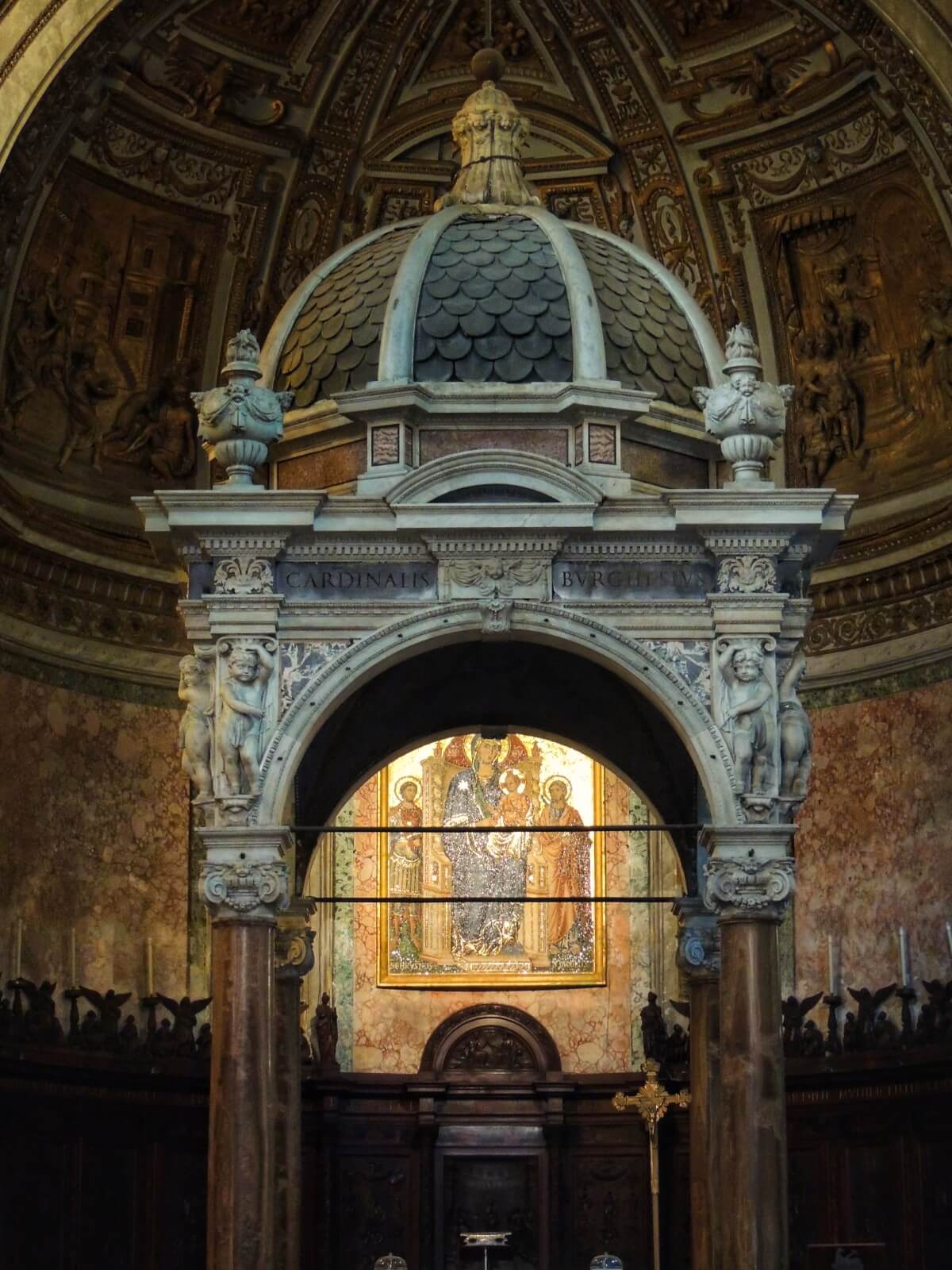
Situated right in the heart of Trastevere, San Crisogono is one of the city’s oldest basilicas, with a story extending all the way back to the 4th century. Unjustly ignored by visitors to Rome as they rush by on bustling Viale Trastevere, behind its sober 17th-century facade San Crisogono conceals some real artistic and historical treasures. A stunning Cosmatesque floor enlivens the interior, where a curvaceous Baroque canopy guards the 12th century high altar. Behind, a beautiful 13th century mosaic of the Virgin Mary with the titular saint Crisogono is the work of Pietro Cavallini, one of the most important artists of medieval Rome. And that’s far from all; descend into the archaeological excavations beneath the basilica and you’ll find yourself in the remains of an earlier, 4th-century church originally built on the site. You’ll be able to recognise the space of the ancient church’s apse and baptistery, make out traces of lovely medieval frescoes recounting the lives of Saint Sylvester and Saint Benedict that once adorned the walls, and even admire a number of magnificently carved ancient sarcophagi. Over 1,600 years of history and spectacular art, all under one roof - not bad for somewhere almost completely ignored by visitors to the city
San Pietro in Montorio
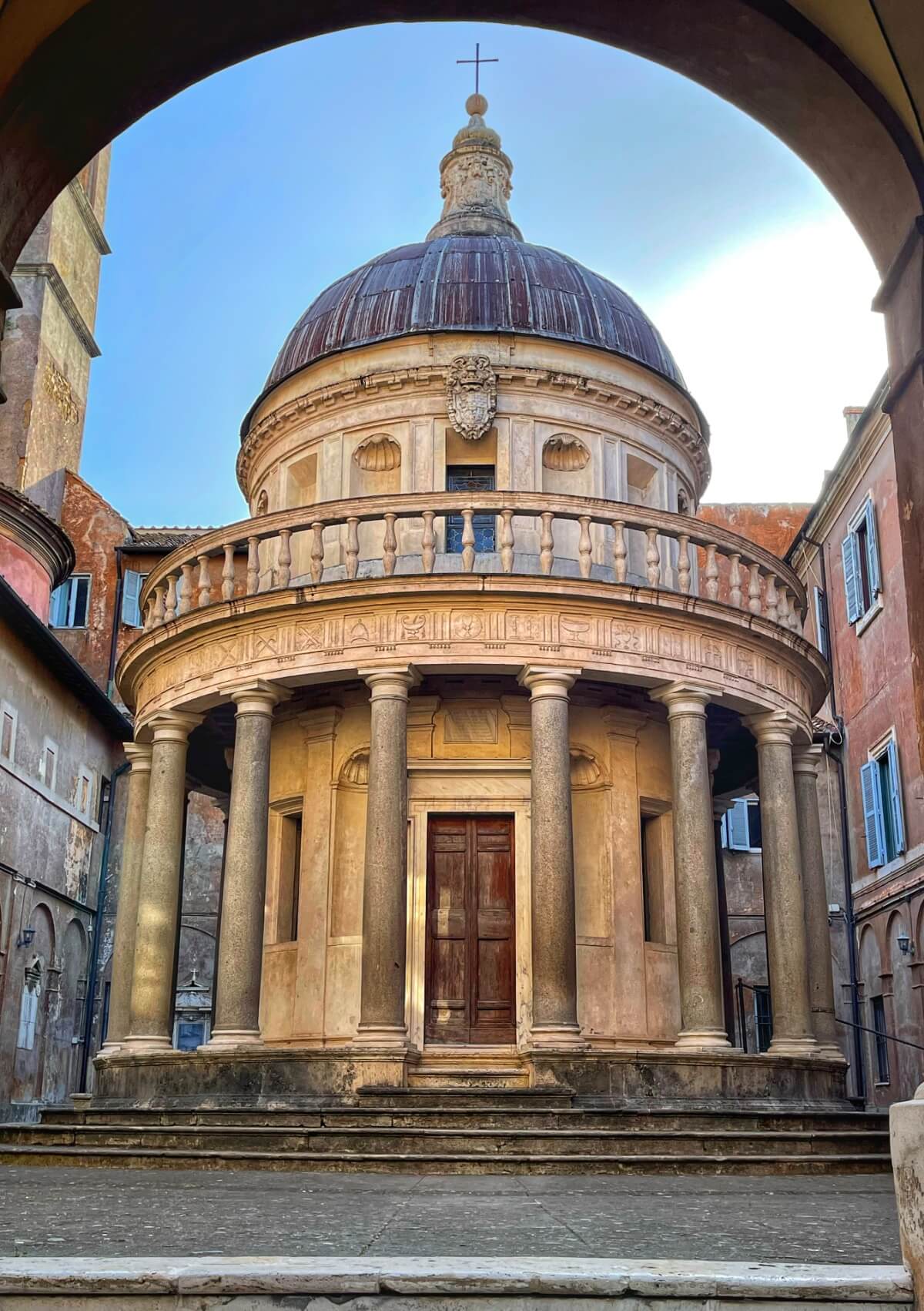
One of the most important buildings of the Italian High Renaissance, the tiny jewel box 'tempietto' in the courtyard of the Roman church of San Pietro in Montorio was built by the visionary architect Donato Bramante at the start of the 1500s. According to tradition this was the exact site of St Peter's martyrdom, and the Spanish king and queen Ferdinand and Isabella (who had recently dispatched Columbus to the New World) ordered Bramante to commemorate the spot. The beautiful little circular church caused a sensation when it was unveiled, drawing artists and architects from all over Europe to see it. Renaissance artists and architects loved the building for its perfect proportions and sculptural qualities that made it seem more like a piece of music than a mere building.
San Benedetto in Piscinula

Located just a stone’s throw from Tiber Island at the edge of Trastevere, charming Piazza in Piscinula is one of the neighbourhood's most lovely squares. The piazza’s diminutive house of worship is dedicated to Saint Benedict, the founder of western monasticism who supposedly spent time here whilst studying at university in Rome during the 5th century (it seems that this was an invention by the Benedictine monks who ran the site in the Middle Ages, hoping to add authority to their church). The tiny interior is a mishmash of spolia - ancient architectural and artistic remains repurposed for use in the medieval church. Look out for the striking 11th century campanile, almost invisible amidst the tiled rooftops of Trastevere’s dense urban fabric - it’s the city’s smallest belltower, and houses the oldest bell still in use in Rome.
Sant’Agata in Trastevere

Unassuming Sant’Agata is one of those churches in Rome that you tend to pass by without giving even a second glance; but if you’re visiting the Eternal City at the end of July, then you need to take a peek inside. The last week of July sees Trastevere’s annual neighbourhood festival, the Festa dei Noantri unfold across the quarter Noantri loosely translates as ‘we others’, a unique word that residents of fiercely independent Trastevere use to refer to themselves, distinguishing them from the Romans across the river. The celebrations centre on a painted wooden statue housed in the church of Saint Agatha just off the main Viale Trastevere, according to legend salvaged from the river by fishermen during a furious storm in the 16th century. Every year the Madonna is dressed in a different outfit designed by the city's finest artisans, and paraded through the streets in two processions where locals carry the statue aloft.
Through Eternity Tours offer award-winning, expert led itineraries in Rome. From the jaw-dropping highlights of the Vatican Museums and the Colosseum to off-the-beaten-path gems that only locals know, join our small-group and private tours of Rome to discover the Eternal City at its best.


